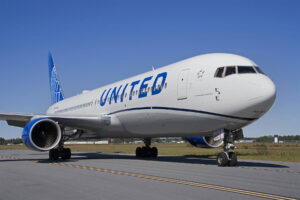10 safest airlines in the world (According to ATRA)
#31
Join Date: Aug 1999
Location: Wynnewood, PA USA
Posts: 2,325
#32
Join Date: Dec 2007
Programs: Enough to travel better
Posts: 2,020
That's ridiculous. Speeding up before touchdown would delay the landing, and extend the landing roll, resulting in it taking longer to reach the gate.
The Burbank accident was due to the continuation of an unstablized approach which resulted from poor handling from the radar approach controller.
Quote:
The NTSB concluded that the probable cause for the accident was excessive flight speed and the steep angle of the glidepath (7 degrees, as opposed to the 3 degrees normally used for both visual and instrument approaches), and the flight crew's failure to abort the approach when conditions were not met for a stable approach and landing. The action of the flight controller was listed as a contributing factor in the accident: "Contributing to the accident was the controller's positioning of the airplane in such a manner as to leave no safe options for the flight crew other than a go-around maneuver."
Air safety experts and pilots suggested the accident was an example of a situation where "fast, steep, unstabilized approaches" are dangerous, and of how inadequate the safety margins around the Burbank runways are (as well as similar U.S. airports).
The Burbank accident was due to the continuation of an unstablized approach which resulted from poor handling from the radar approach controller.
Quote:
The NTSB concluded that the probable cause for the accident was excessive flight speed and the steep angle of the glidepath (7 degrees, as opposed to the 3 degrees normally used for both visual and instrument approaches), and the flight crew's failure to abort the approach when conditions were not met for a stable approach and landing. The action of the flight controller was listed as a contributing factor in the accident: "Contributing to the accident was the controller's positioning of the airplane in such a manner as to leave no safe options for the flight crew other than a go-around maneuver."
Air safety experts and pilots suggested the accident was an example of a situation where "fast, steep, unstabilized approaches" are dangerous, and of how inadequate the safety margins around the Burbank runways are (as well as similar U.S. airports).
#34
Join Date: Feb 2002
Location: BNA
Programs: HH Gold. (Former) UA PP, DL PM, PC Plat
Posts: 8,196
You said that SWA pilot's routinely speed up at touchdown to reach the gate quicker. That's ridiculous as doing so would produce the opposite of the intended result.
#35
Join Date: Mar 2010
Location: Seattle, WA, USA
Programs: AS MVP Gold 75K, Marriott Lifetime Titanium
Posts: 1,600
There is no speed up just before landing. They may more likely maintain more speed on the roll out. This is to have a high speed taxi down the runway instead of a slow roll on an adjoining taxiway. Ok to do so long as you don't disrupt the next operation on the runway. They're just trying to reduce the time from touchdown to gate. All part of the SW goal to minimize ground time. Other times you might feel they're slamming on the brakes to make the first reasonable exit so they minimize backtracking to the gate.
Second, every airline has company guidelines for go/no-go on the landing. I've always heard it as an altitude AGL (above ground level) therefore being commonly being called the "Decision Altitude". This means the approach has to be stabilized at the decision altitude. I don't know the specifics on what constitutes stabilization. Not a pilot. In general, I believe, for the layman you can assume it means a controlled descent and energy is stable. Speeding up right before landing does not fit into this concept and I'm pretty sure a certain regulator would not approve this as a standard procedure. Aircraft carrier pilots make see things differently.
#36
Join Date: Feb 2002
Location: BNA
Programs: HH Gold. (Former) UA PP, DL PM, PC Plat
Posts: 8,196
You are confusing terms. Decision altitude (DA) is part of a precision instrument approach such as an ILS. What you are talking about is stabilized approach criteria.
The crew on the Burkbank flight violated stabilized approach criteria due to poor handling from the approach controller. When they violated stabilized approach criteria they were required to initiate a go-around, which they did not.
The crew on the Burkbank flight violated stabilized approach criteria due to poor handling from the approach controller. When they violated stabilized approach criteria they were required to initiate a go-around, which they did not.
#39
Join Date: Mar 2010
Location: Seattle, WA, USA
Programs: AS MVP Gold 75K, Marriott Lifetime Titanium
Posts: 1,600
You are confusing terms. Decision altitude (DA) is part of a precision instrument approach such as an ILS. What you are talking about is stabilized approach criteria.
The crew on the Burkbank flight violated stabilized approach criteria due to poor handling from the approach controller. When they violated stabilized approach criteria they were required to initiate a go-around, which they did not.
The crew on the Burkbank flight violated stabilized approach criteria due to poor handling from the approach controller. When they violated stabilized approach criteria they were required to initiate a go-around, which they did not.
#40
Join Date: Sep 2010
Location: Western Europe
Programs: Yeah, well, don’t really care anymore
Posts: 846
Stabilised Approach criteria are as follows with the lot I used to fly a 757 for, but generally speaking they're more or less the same for most airlines.
Aircraft must be stable at 1000ft AGL. This means:
Speed within 5 knots of Vref (landing speed)
Gear Down
Landing flaps set
Engine power set and stabilised
On Glideslope and Localiser (or on glidepath for a visual approach)
At most busy airports we'd usually be instructed by ATC to maintain "160 (kts) to 5 (miles final)". That would mean you'd be going down the ILS with engines in flight idle, Flaps 20 set, until you reach an altitude of around 1500ft AGL. This leaves you with roughly 500ft of altitude and 1.5 milesof distance to configure the aircraft for landing. To achieve that you'd have to be very much on the ball. Still, works like a charm in the vast majority of cases.
Once you've met stabilised approach criteria you can continue below 1000ft towards Decision Altitude, which is as low as 50ft for a Cat IIIb (autoland) approach.
Aircraft must be stable at 1000ft AGL. This means:
Speed within 5 knots of Vref (landing speed)
Gear Down
Landing flaps set
Engine power set and stabilised
On Glideslope and Localiser (or on glidepath for a visual approach)
At most busy airports we'd usually be instructed by ATC to maintain "160 (kts) to 5 (miles final)". That would mean you'd be going down the ILS with engines in flight idle, Flaps 20 set, until you reach an altitude of around 1500ft AGL. This leaves you with roughly 500ft of altitude and 1.5 milesof distance to configure the aircraft for landing. To achieve that you'd have to be very much on the ball. Still, works like a charm in the vast majority of cases.
Once you've met stabilised approach criteria you can continue below 1000ft towards Decision Altitude, which is as low as 50ft for a Cat IIIb (autoland) approach.
#41
A FlyerTalk Posting Legend
Join Date: Jul 2002
Location: MCI
Programs: AA Gold 1MM, AS MVP, UA Silver, WN A-List, Marriott LT Titanium, HH Diamond
Posts: 52,587
#42
Join Date: Feb 2002
Location: BNA
Programs: HH Gold. (Former) UA PP, DL PM, PC Plat
Posts: 8,196
While the child did tragically die as a result of that accident, he wasn't a passenger or crewmember on the flight so it doesn't count in this context. Same as the far too frequent accident when a ramp worker has been killed by walking into a spinning propeller.
#43
A FlyerTalk Posting Legend
Join Date: Jul 2002
Location: MCI
Programs: AA Gold 1MM, AS MVP, UA Silver, WN A-List, Marriott LT Titanium, HH Diamond
Posts: 52,587
To me that's different from an on-the-job accident...
#44
Suspended
Join Date: Jan 2010
Location: Calgary, Alberta
Programs: Hyatt Diamond, Fairmont Platinum, Aeroplan Diamond, HHonors Gold, SPG Gold
Posts: 18,686
I remember some articals specifically stating X number of civilian deaths on ground..
#45
Join Date: Dec 2007
Programs: Enough to travel better
Posts: 2,020
Not to go back and forth on these posts but my comment was stated in general and is the perception by the industry in transportation modeling. I apologize for the confusion. What actually caused the accident is something different which you are bringing up but admittedly, excessive speed of the plane is a contributing factor in the accident.
Last edited by tonywestsider; Sep 12, 2011 at 8:42 pm






















